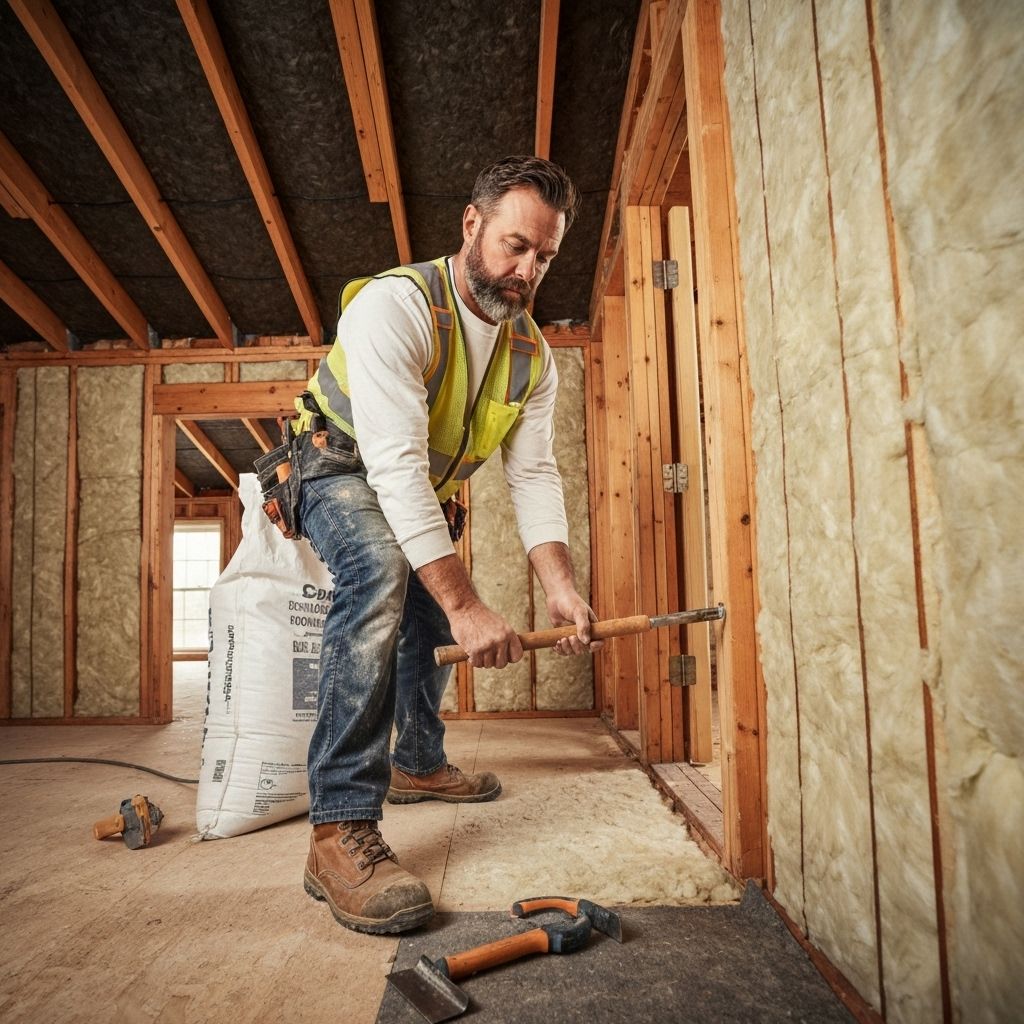Eco-Friendly Insulation: Sustainable Choices for a More Sustainable Dwelling

In an era where eco-friendliness is at the forefront in our thoughts, opting for sustainable options for our living spaces is more important than ever . One of the key ways to achieve a greener home involves with proper insulation . Not only will it enhance comfort throughout the year , but it also plays a crucial part at reducing energy use and decreasing your carbon footprint . Whether https://mlx.su/paste/view/e8425824 or enhancing your current residence, knowing the various insulation options available can help you making smart choices beneficial for your finances as well as the environment .
In this comprehensive guide to home insulation , we will cover various eco-friendly insulation options, discuss how to evaluate your current insulation needs , and emphasize the surprising benefits that come with a well-insulated home . From learning about R-values to choosing between batt and blown-in insulation , we will equip you with the information you need to make the best decisions for your home. Therefore, if you are prepared to stop wasting money and begin your path to a greener home , let's dive into the realm of sustainable insulation.
Understanding Insulation Forms

Regarding home insulation, grasping the different types in existence is key for developing educated choices that improve both your ease and the natural surroundings. The most common insulation types include fibreglass, cellulose, foamed insulation, and rock wool. Each type has individual characteristics and applications, making it crucial to select the suitable one for your individual requirements. insulation companies is widely used for its low cost and effectiveness, while cellulose, made from recycled paper, offers a more sustainable option with superb thermal performance.
Foamed insulation is an alternative popular choice, known for its air-sealing capabilities. It grows on application, filling gaps and fissures that conventional insulation may miss. This kind can significantly improve energy efficiency and comfort in your house. On the contrarily, mineral wool, also identified as stone fiber, is appreciated for its flame-retardant characteristics and noise reduction capabilities, making it an ideal option for places where sound management is important.
In addition to selecting the suitable kind, considering the insulation R-value is crucial in comprehending insulation effectiveness. The thermal resistance value assesses temperature resistance, indicating how well the insulation can withstand transfer of heat. Greater R-values mean higher insulation performance. When choosing insulation materials, it’s important to factor in not only their temperature performance but also their sustainability, expense, and suitability for your specific home configuration. By considering these variables, you can develop a eco-friendly choice for a more eco-conscious home.
Thermal Installation Guidelines
When putting in insulation, the first step is to carefully measure the spaces you intend to insulate. Accurate measurements guarantee that you buy the right amount of insulation material, minimizing waste and maximizing efficiency. Take note of any unusual shapes or sizes that may require special cutting or fitting. If you're not certain about your measurements, consider consulting a professional or using online tools that can guide you through the process.
Before you begin, it’s crucial to air seal your home to enhance the effectiveness of the insulation. This involves identifying and sealing any gaps or leaks around window frames, doors, and other areas where air might leak. A well-sealed home prevents drafts and ensures that the insulation can perform at its best. Use caulk, expanding foam, or weather stripping to fill these openings, creating a block that improves energy efficiency.
Lastly, when working with insulation, always prioritize safety. Wear appropriate protective gear, such as gloves, goggles, and masks, especially if you’re using materials like fiberglass insulation, which can cause discomfort to your skin and lungs. Additionally, ensure proper ventilation in your work area to avoid inhaling any dust or fibers that may become airborne. Taking these safety measures will make the setup process safer and more efficient, resulting in a more comfortable and efficient home.
Advantages of Proper Insulation
Proper insulation provides numerous benefits that contribute to a much comfortable and eco-friendly home. One of the key advantages is temperature management. Insulation helps to preserve a steady indoor temperature, holding your home cozy in the winter and refreshing during the summer. This reduces the reliance on heating and cooling systems, leading to decreased energy bills and a greener living environment.
In addition to utility savings, adequate insulation can significantly boost indoor air quality. Well-insulated homes are better at keeping out outdoor pollutants, dust, and moisture from invading, which can help create a safer living space for you and your family. Furthermore, insulation minimizes noise transfer between rooms, allowing for greater privacy and a quieter home setting.
Beyond pleasure and wellness, putting money into adequate insulation can enhance the overall value of your property. Homes with high-quality insulation are commonly more attractive to buyers, as they offer lower operating costs and a greater sense of comfort. Thus, enhancing your insulation not only improves your immediate living conditions but can also be a sound financial decision in the years to come.
